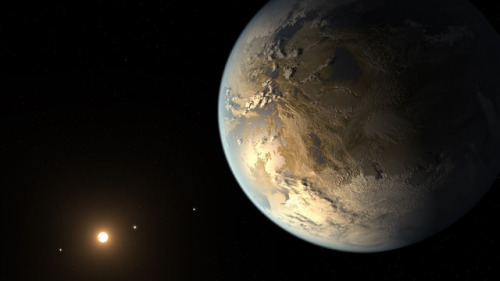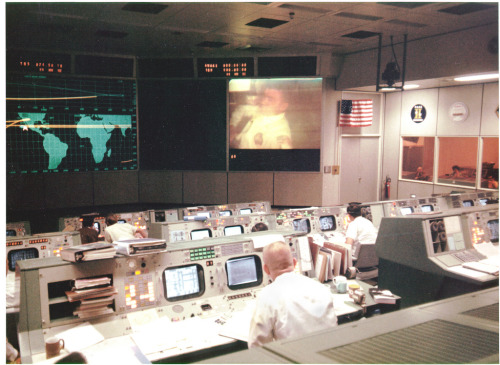Dazzling Photos Let You Orbit The Earth With Astronaut Tim Peake










Dazzling Photos Let You Orbit the Earth with Astronaut Tim Peake
More Posts from Decimatethestars-blog and Others




Bioluminescent Plankton
Scientists have only recently discovered that this type of plankton glows when they are moved because of stress - ironic when you consider how relaxing the sight of the shimmering waves are in the dark night. Bioluminescence is used as a defence mechanism to draw predators towards the creature trying to eat the plankton. The tiny flashes of light also disorientate and surprise the predator.
These tiny organisms produce light using a chemical called luciferin. The process of creating a bioluminescent light, which is simply light produced within a living creature, differs between organisms. Some need a particular food or another creature for the effect to happen. But this type of plankton, called dinoflagellates, produce luciferin on their own. The light the tiny plankton emit is called ‘cold light’, meaning less than 20% of the light generates heat.
Huge areas of the ocean can become populated by glowing plankton but the effect is especially common in warm-water lagoons that have narrow openings to the sea. This causes the plankton to gather and become trapped, causing the water to turn orange.
Image credit: Will Ho, Kin Cheung, Landscapes Maldives & eyegami
Source: Kuoni

The faint rings of Uranus, shot in 1986, are made of countless fragments of water ice containing radiation-altered organic material.
Credit: NASA/JPL/Michael Benson, Kinetikon Pictures

Kepler-186f, the first Earth-size Planet in the Habitable Zone
js

This illustration shows the cosmic epochs of our Universe from the Big Bang to the Present. The position of galaxy A1689-zD1 is shown as an example of a particularly early forming and distant galaxy.
Image credt: NASA, ESA, and A. Feild (STScI).
-
 silksolstice liked this · 4 years ago
silksolstice liked this · 4 years ago -
 juliosantt liked this · 6 years ago
juliosantt liked this · 6 years ago -
 skinks liked this · 6 years ago
skinks liked this · 6 years ago -
 wolfhalls reblogged this · 6 years ago
wolfhalls reblogged this · 6 years ago -
 littleontheloose-blog liked this · 6 years ago
littleontheloose-blog liked this · 6 years ago -
 r-555111 reblogged this · 6 years ago
r-555111 reblogged this · 6 years ago -
 r-555111 liked this · 6 years ago
r-555111 liked this · 6 years ago -
 groovy-waste-lander liked this · 6 years ago
groovy-waste-lander liked this · 6 years ago -
 morafotografia reblogged this · 6 years ago
morafotografia reblogged this · 6 years ago -
 morafotografia liked this · 6 years ago
morafotografia liked this · 6 years ago -
 rainbowunicornrainbowunicorn reblogged this · 6 years ago
rainbowunicornrainbowunicorn reblogged this · 6 years ago -
 fablaren liked this · 6 years ago
fablaren liked this · 6 years ago -
 cosmic-prism reblogged this · 6 years ago
cosmic-prism reblogged this · 6 years ago -
 the-smell-of-fuuurl reblogged this · 6 years ago
the-smell-of-fuuurl reblogged this · 6 years ago -
 dr4ino liked this · 7 years ago
dr4ino liked this · 7 years ago -
 moonlightmolly liked this · 7 years ago
moonlightmolly liked this · 7 years ago -
 steamy9 liked this · 7 years ago
steamy9 liked this · 7 years ago -
 extraterrestrial-boy reblogged this · 7 years ago
extraterrestrial-boy reblogged this · 7 years ago -
 hanakumatrill reblogged this · 7 years ago
hanakumatrill reblogged this · 7 years ago -
 hanakumatrill liked this · 7 years ago
hanakumatrill liked this · 7 years ago -
 architectureofsleep reblogged this · 7 years ago
architectureofsleep reblogged this · 7 years ago -
 architectureofsleep liked this · 7 years ago
architectureofsleep liked this · 7 years ago -
 shinycharmander reblogged this · 7 years ago
shinycharmander reblogged this · 7 years ago -
 heaven-and-earth-in-jest reblogged this · 7 years ago
heaven-and-earth-in-jest reblogged this · 7 years ago -
 driven-to-aspire reblogged this · 7 years ago
driven-to-aspire reblogged this · 7 years ago -
 fayebelle reblogged this · 7 years ago
fayebelle reblogged this · 7 years ago -
 ash-1611 liked this · 7 years ago
ash-1611 liked this · 7 years ago -
 friendlyneighbourhoodchinaman reblogged this · 7 years ago
friendlyneighbourhoodchinaman reblogged this · 7 years ago -
 thelifesurprise1 liked this · 7 years ago
thelifesurprise1 liked this · 7 years ago -
 elnabe reblogged this · 7 years ago
elnabe reblogged this · 7 years ago -
 cosmicallysad liked this · 7 years ago
cosmicallysad liked this · 7 years ago -
 fuck-this-shit18-blog1 liked this · 7 years ago
fuck-this-shit18-blog1 liked this · 7 years ago -
 osakahero liked this · 7 years ago
osakahero liked this · 7 years ago -
 wherethesleeplessplay reblogged this · 7 years ago
wherethesleeplessplay reblogged this · 7 years ago -
 berta60 liked this · 7 years ago
berta60 liked this · 7 years ago
eleon / 18 / they. aspiring astronaut. lover of biology and space.
25 posts














